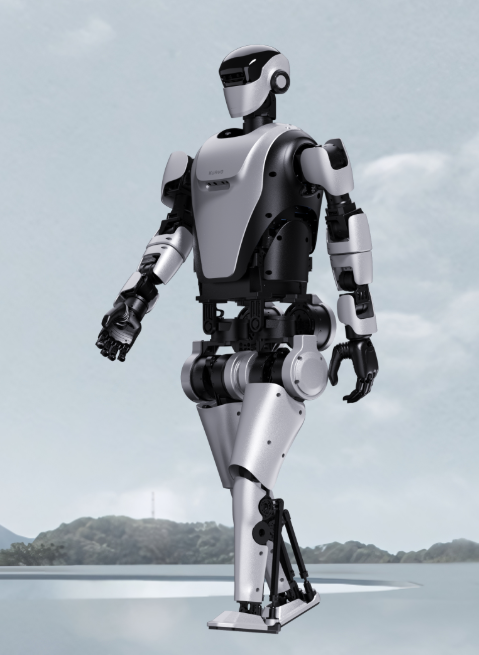World’s First 5G-A Humanoid Robot Unveiled
Published: March 06, 2025 17:53
At the recently held MWC 2025, China Mobile, Huawei, and Leju Robot jointly launched the world’s first humanoid robot equipped with 5G-A technology, drawing widespread industry attention.
What is 5G-A Technology?
5G-A technology can be understood as an enhanced version of 5G, essentially a “next-level” or “2.0” upgrade of 5G. It is not an entirely new network standard but rather a deep optimization of existing 5G infrastructure, often referred to as 5.5G, marking a critical transition between 5G and 6G.
Compared to traditional 5G, 5G-A offers improvements in speed, intelligence, flexibility, and stability, featuring lower latency and support for more complex application scenarios. With 5G-A technology, humanoid robots can achieve high-precision positioning in large-scale environments without additional equipment, enhancing multi-robot collaboration reliability and further expanding industrial applications. Additionally, the high bandwidth capabilities of 5G-A enable large-scale data collection, providing rich training datasets for deep learning models in humanoid robots. This accelerates development cycles and broadens adaptation across various industries.
The 5G-A humanoid robot introduced by Leju Robot is backed by the strong technological support of China Mobile and Huawei.
Huawei and Leju Robot: A Deepening Collaboration in Humanoid Robotics
Huawei’s collaboration with Leju Robot is not new; instead, it has been a long-term strategic effort.As early as November 2023, Leju Robot Robotics launched KUAVO (夸父), the first humanoid robot based on Huawei’s open-source Hongmeng (KaihongOS) system.

In March 2024, Huawei Cloud partnered with Leju Robot to explore applications of “Huawei Pangu Model + KUAVO humanoid robot”, working together to establish the "Humanoid Robot+" open ecosystem.
By June 2024, the KUAVO humanoid robot, powered by Huawei’s Pangu Model, made its debut at the Huawei Developer Conference, becoming the first humanoid robot capable of seamless interconnectivity with the Hongmeng ecosystem.
Huawei’s expansion into the robotics field continues to accelerate. In November 2024, Huawei, along with China Mobile and other partners, launched the “Smart Network, Intelligent City” initiative, focusing on 5G-A, AI, and humanoid robotics to advance smart city development and push humanoid robots from labs into commercial applications.
That same month, at the AI Application Innovation Achievements Conference, the Huawei (Shenzhen) Global Embodied Intelligence Industry Innovation Center officially opened, attracting leading industry players such as Leju Robot Robotics, Zhaowei Machinery, Dazuo Robotics, and X Square Robot, further strengthening the embodied intelligence ecosystem.
Currently, Huawei’s strategy in robotics is primarily ecosystem-driven, positioning itself as an enabler rather than a direct competitor.
Industry analysts suggest that in the early stages of humanoid robot development, Huawei is positioning itself as a “shovel seller”, leveraging its expertise in chips, communication, cloud computing, and AI to build a robust robotics ecosystem and drive the entire industry forward.
As a key partner in Huawei’s ecosystem, Leju Robot Robotics announced in January that it had delivered its 100th full-size humanoid robot, achieving small-scale production and integration into Beiqi Off-Road Vehicle’s smart manufacturing process.
Compared to Unitree, which has gained significant public attention in the consumer market, Leju Robot Robotics is focusing on B2B applications, leveraging Huawei’s technological backing while also securing investments from Tencent and Shenzhen Venture Capital. Supported by favorable policies and strong financial backing, Leju Robot is rapidly rising as a leading force in the humanoid robotics industry.
Key Industry Milestones in Early 2025
At the beginning of this year, the humanoid robotics industry witnessed several breakthrough achievements:
· Unitree Robotics showcased its robots on China’s Spring Festival Gala.
· ENGINEAI demonstrated humanoid robots performing front flips.
· UBTech entered the automotive sector, conducting multi-robot collaborative training.
From enhanced mobility to real-world applications and advanced human-robot interactions, humanoid robotics technology is evolving at an unprecedented pace, shaping an increasingly competitive landscape.
